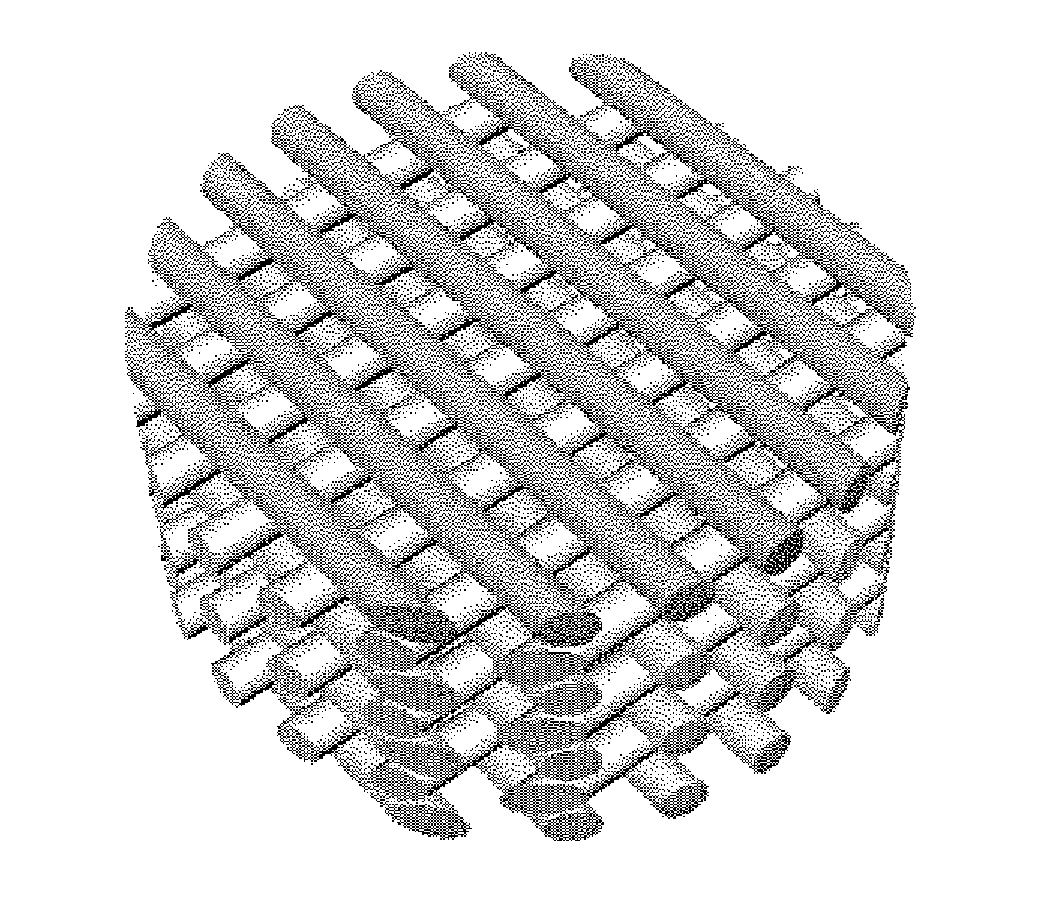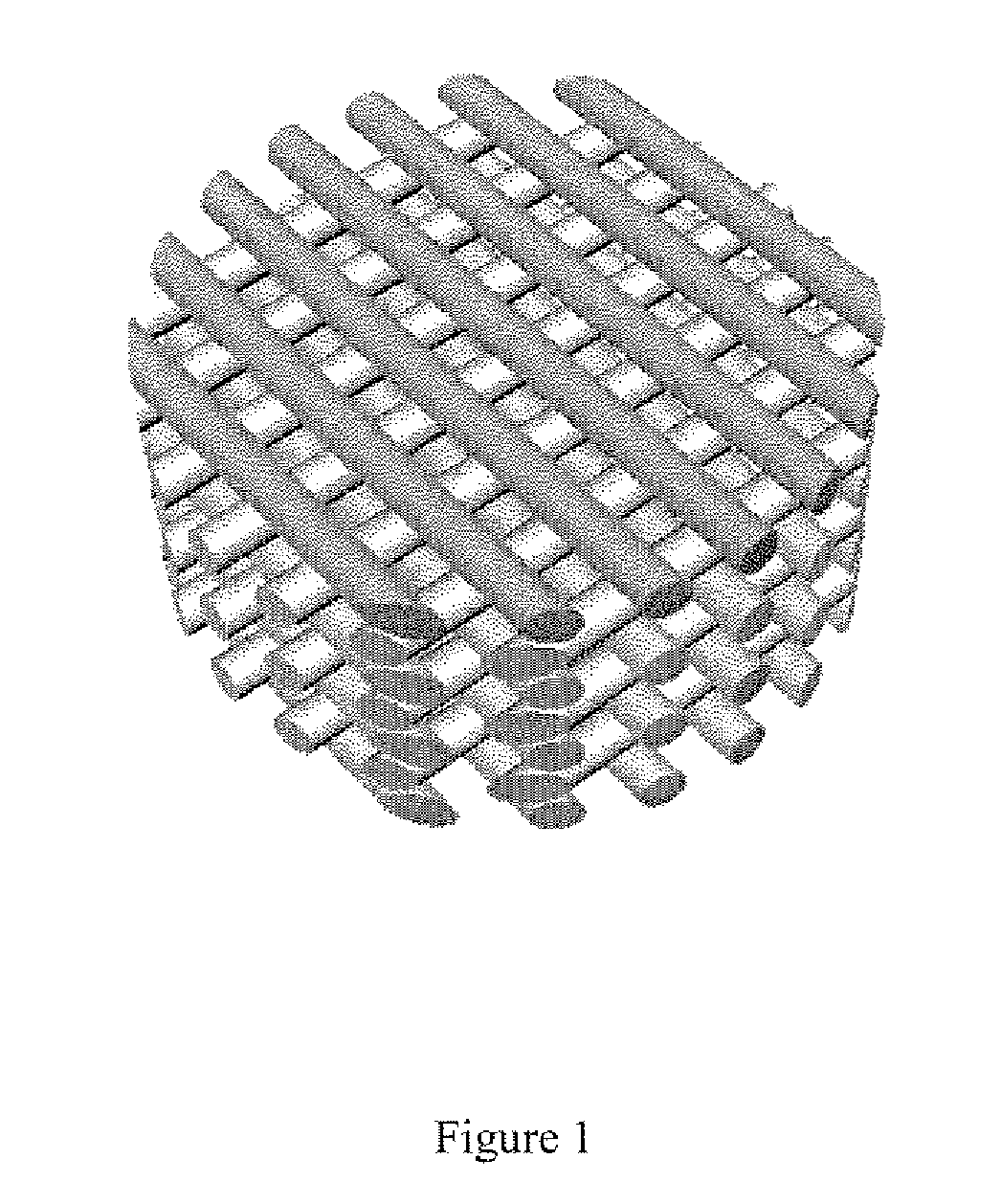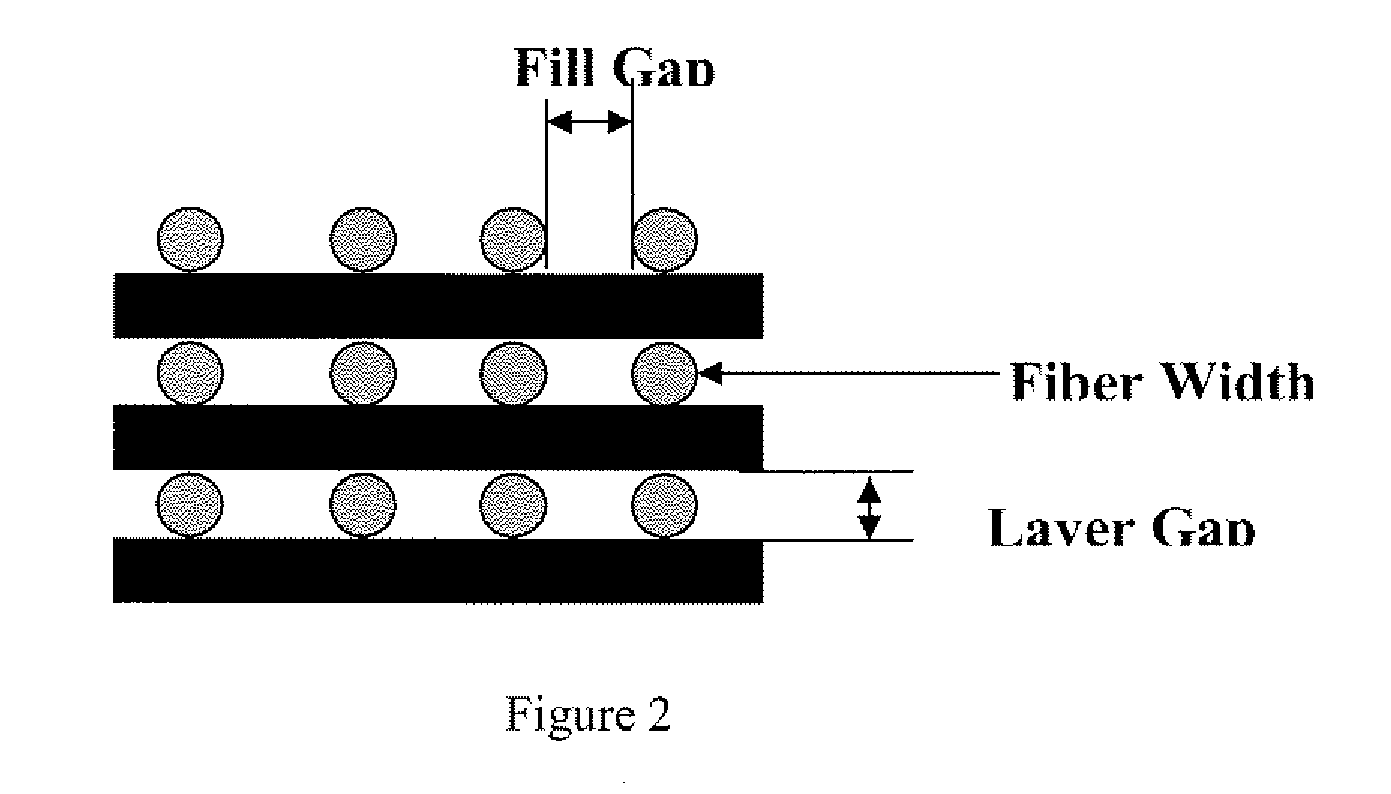Three Dimensional Cell Culture Construct and Apparatus for its Making
- Summary
- Abstract
- Description
- Claims
- Application Information
AI Technical Summary
Benefits of technology
Problems solved by technology
Method used
Image
Examples
example 1
5.5 EXAMPLE 1
Method of Making Cell Culture Construct
[0104]A cell culture construct is fabricated using polystyrene material. The cell culture construct parts as shown in FIG. 5 were used to assemble into cell culture construct. These parts were injection molded according to the design. After the parts were made, the first layer was placed first in the assembling guide and then followed by sequentially putting the second, third and forth layers of part into the guide. So the total number of the parts was 4. These 4 parts were then tied together using a polystyrene fiber clap as shown in FIG. 7. The two ends of the clap were further secured by forming a tie or deforming the two ends so that the two ends would not coming out through the holes of the construct. After assembled, the cell culture construct was plasma-treated in argon using a Polaron PT7300 RF Plasma Barrel Etcher (Quorum Technology, East Sussex, UK). The radio-frequency power, pressure and treatment time were fixed at 296...
example 2
5.6 EXAMPLE 2
Use of Cell Culture Construct for Cell Culture
[0106]The present invention also provides methods of using the cell culture construct for culturing living cells within a tissue culture polystyrene plate. The cell culture construct used in this study had a size of 10 mm wide×10 mm long×0.3 mm thick, with square pore opening of 200 μm and fiber diameter of 400 μm. Smooth muscle cell were seeded using a static seeding method: 500 μl of smooth muscle cell suspension (1×105 cells / ml) was pipetted onto the upper surface of the construct and allowed to attach for 2 h at 37° C., before flooding with medium. After being seeded with cells, cell culture constructs were maintained in the well plates submerged in growth medium, and cultured at 37° C. in an incubator in a 90% humidified atmosphere of 5-10% carbon dioxide in air. Cell culture growth medium consisted of Dulbecco's Modified Eagle's Medium (DMEM) containing 5% (v / v) fetal bovine serum. In the case using a dynamic seeding, ...
example 3
5.7 EXAMPLE 3
Use of Cell Culture Construct for Cell Culture in a Bioreactor
[0109]The present invention also provides methods of using the cell culture construct for culturing living cells within a bioreactor. The cell culture construct used here was a disc shape (10 mm diameter discs with a thickness of 0.8 mm, porosity 80% and fiber diameter of 200 μm) and fit into the bioreactor.
[0110]Rat bone marrow stromal cells (MSCs) were statically seeded first onto the cell culture construct. 500 μl of MSC suspension with 250,000 rat MSCs was pipetted onto the upper surface of the cell culture construct, and allowed to attach for 2 hours at 37° C. before flooding with medium. After seeding with cells, these seeded cell culture constructs were maintained in a flow perfusion culture bioreactor. These cell seeded cell culture constructs were submerged in a complete osteo-differentiation medium, and cultured at 37° C. in a 90% humidified atmosphere of 5-10% carbon dioxide in air. The operation o...
PUM
 Login to View More
Login to View More Abstract
Description
Claims
Application Information
 Login to View More
Login to View More - R&D
- Intellectual Property
- Life Sciences
- Materials
- Tech Scout
- Unparalleled Data Quality
- Higher Quality Content
- 60% Fewer Hallucinations
Browse by: Latest US Patents, China's latest patents, Technical Efficacy Thesaurus, Application Domain, Technology Topic, Popular Technical Reports.
© 2025 PatSnap. All rights reserved.Legal|Privacy policy|Modern Slavery Act Transparency Statement|Sitemap|About US| Contact US: help@patsnap.com



